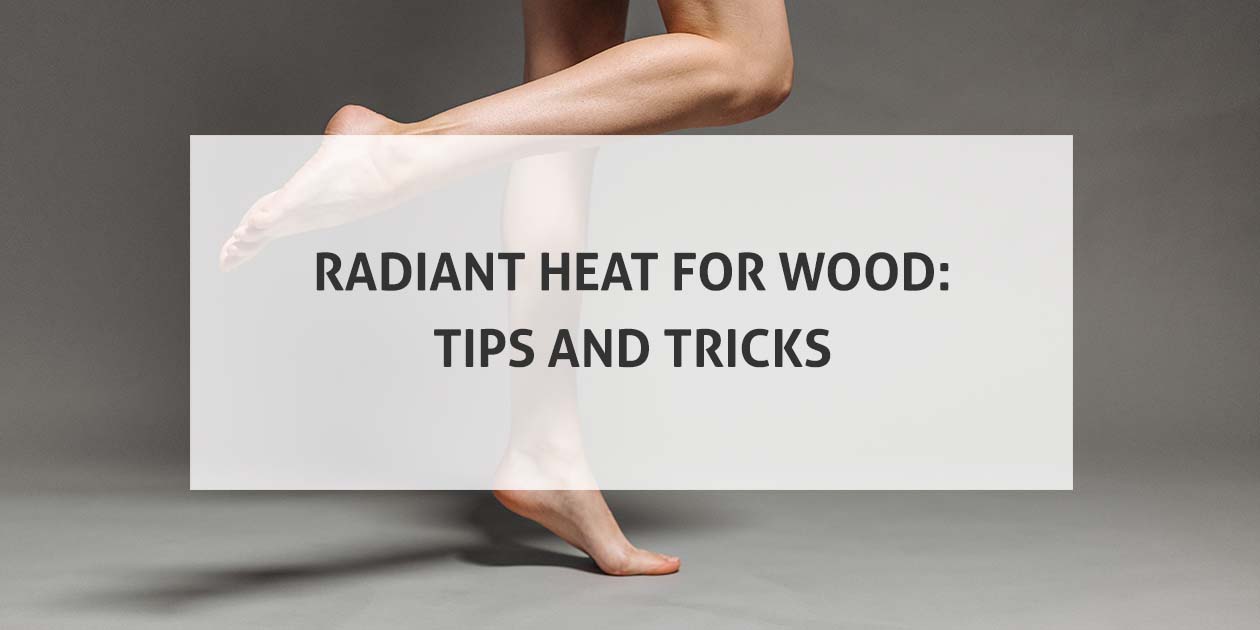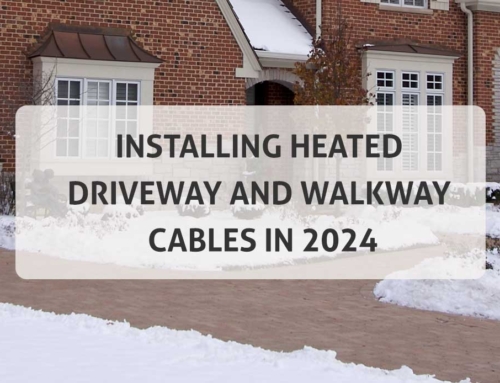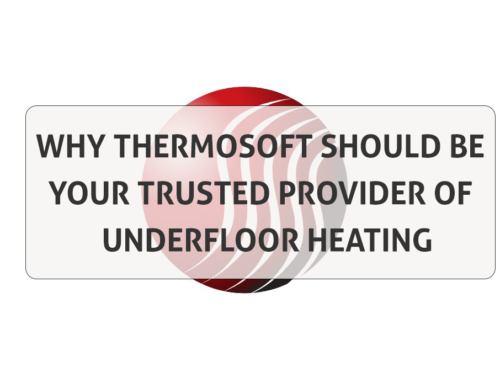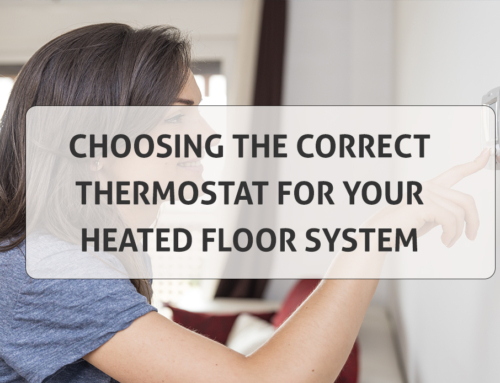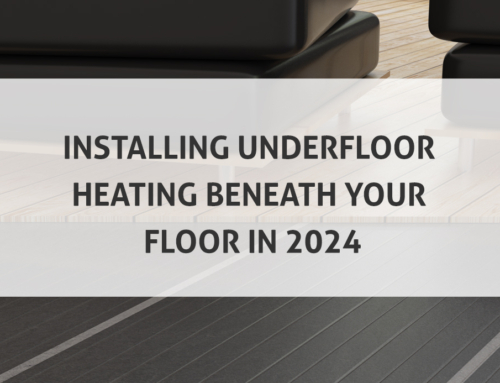Radiant Heat for Wood: Tips and Tricks
Laying down some of the most pivotal information when heating wood floors.
TRICKS OF THE TRADE
Radiant heat is a great way to keep your floors warm in the winter, but sometimes it can be tricky to get it right. We’ve got some tips and tricks to help you get started.
Radiant Heat for Wood: Tips and Tricks
Radiant heat is a great option for floors because it keeps you warm from the ground up. So, if you’re looking to upgrade your home with radiant heat and want to know what to look for in a flooring material, here are some tips:
1. Use compatible wood.
The first tip for radiant heat for wood is to make sure the wood species is compatible with
radiant heat. Hickory has lots of issues with this kind of installation; if you’re using hickory for your flooring, we recommend avoiding radiant heat or making sure that it’s installed by experts who know what they’re doing. If you have any questions about which woods are compatible with this type of installation and which aren’t, check with the flooring manufacturer before proceeding with the installation process. You may also want to consult with an expert on installing this type of system—there are lots of factors that can affect how well it works. Refer to the National Wood Flooring Association’s article on wood and radiant heat for more information on wood species.
2. Install the right heating system.
The second tip for radiant heat for wood is to install the right heating system for wood and application. To get the most out of your radiant heat, we recommend reading the National Wood Flooring Association’s guidelines on pages 92-101.
Most systems are designed with tile in mind, requiring mortar and cement which is a lengthy and complex installation process. The best choice is a fabric mat with thermal cutoff—it can work with engineered or solid floating, nail down, or glue down floors and sits directly under the floor, unlike others. And if you’re looking for a system that’s safe for wood floors, you’ll want one designed specifically for them like our fabric mat with thermal cutoff!
3. Check the humidity levels.
Next, check the humidity levels in your home. You can do this by getting a humidity monitor (they’re cheap and easy to find online) and installing it into one of the boards in your flooring. You’ll need to carve out a channel for it first, but once that’s done you’ll be able to see how much moisture is in the air from an app on your phone!
4. Use a humidifier or dehumidifier.
If you have hardwood floors that have radiant heat installed under them, this is the first step toward keeping them in top condition. Humidity levels are important because they affect how quickly your wood floor will wear down and whether or not it will stay looking good. If there’s too much moisture in the air, it can cause mold or mildew growth on your floorboards—which can make them deteriorate!
You can use either a humidifier or dehumidifier depending on what kind of climate you live in. If you live somewhere that gets cold during wintertime (like an apartment building), then using a dehumidifier would be better because it helps prevent condensation from forming on windows. If you live somewhere where there’s more humidity than usual during summertime (like an old house), then using a humidifier might be best since it keeps moisture levels high enough to prevent premature wear-and-tear but low enough so that mold doesn’t grow on your floorboards.
5. Pay attention to the directionality of the wood.
The heating element/cables need to be parallel with the flooring. This means that if you’re nailing, you need to make sure that your nails only go through the fabric part of the board and not through the heating wire. This is easy to do if you pay attention to the spacing between boards.
6. Get floorboards that are thinner.
Get floorboards that are thinner, rather than wider. Larger planks have less give because there’s more weight on each piece of wood, so they won’t shift as much when humidity levels change (which is great for keeping things flat). Smaller boards make it easier for floors to adjust when humidity levels change, which means fewer problems with sagging and warping over time.
7. Use the right fasteners for your system.
Check with the flooring manufacturer (or the company you’re buying the floor from) to see if they have installation instructions for radiant heat flooring. If they do, make sure you follow them carefully! They will tell you what fasteners and glues are approved for use with radiant heat systems. This will help your installation process go faster and ensure that your system works more optimally.
8. Buy an extra 10% of flooring than you need.
Buy 10% extra flooring than you need. In case you need to replace a wire if an installer nicks it or something (which happens!), having matching wood on hand makes it easy for them to replace it without having to wait for another shipment or ordering more materials.
9. Add extra temperature sensors.
You’ll want to make sure that you add extra temperature sensors (if one sensor fails, you will have a backup you can wire into your thermostat that is already embedded). You can do different sensors for different areas—for example, if you want to use radiant flooring in a bathroom or laundry room, but not in the rest of the house. Since your floor heating is going to last a long time, you might want to rearrange furniture later on.
10. Use a moisture barrier.
The last thing to consider for radiant heat is the moisture barrier. If you are laying down a radiant heating system on top of a concrete slab or even directly on top of plywood or OSB boards, be sure to use a vapor barrier or moisture barrier to protect your heating system from the moisture in the concrete floor. Vapor barriers, like foil-faced bubble wrap, are available at most home improvement stores. Moisture barriers, like an adhesive-backed membrane or a sheet of plastic, are also available at most home improvement stores. The vapor and moisture barriers can be laid right on top of the subfloor and then covered with flooring.
Conclusion
The most common problem with radiant heat specifically when dealing with hardwood flooring is moisture damage from the radiant heating system not being installed correctly. Wood is a tough material and can weather storms but it will warp if not installed correctly. Make sure you follow these steps and your wood floors are sure to be long-lasting and beautiful. Read more about heating wood floors in Top 3 Wood Floor Heat Thermostat Choices or Compatible Systems for Wood Floors and be sure to call our experts at (800)308-8057 for more information.
Why ThermoSoft’s Floor Heating Systems are the Answer For You
With these benefits in mind, where can you add comfort and value at the same time?
Look no further than ThermoSoft floor heating systems! We have the fastest warm-up time in the industry, and installation is simple and DIY-friendly.
Benefits of ThermoSoft Floor Heating
- Available for All Types of Flooring: Tile, Laminate, Solid and Engineered Wood, Vinyl, Cement Slab, and Carpet
- Exceptional Comfort: Warms rooms and not ceilings, Uniform, ideal heat pattern, Say goodbye to drafty rooms, Invisible and silent, Individual room control
- Cleaner, Healthier, Maintenance-Free: No dirty vents or ducts, No more drying out your air
- Energy-Saving: 100% Efficiency, More comfort, less energy, Use less energy by needing less heat
- Easy to Install: Designed with installation in mind, Tools already in your toolbox, Simple hookup, We’re here to support you
ThemoSoft never compromises on your comfort or safety, so why would you?
Start enjoying each space more than ever with ThermoSoft floor heating systems. Visit us online or contact Thermosoft today.
Tell us about your project and let our experts help you. Our team of Radiant Experts is ready to help! We can help find the right radiant heat product for any project from indoors to the outdoors. Just tell us a little about yourself and your project to get started.
Contact an Expert 1-800-308-8057
Don’t Trust Just Any Floor Heating Systems – Insist on ThermoSoft Products
ThermoSoft offers the best-performing and most reliable radiant electric heat solutions on the market. Our systems are safe and can be installed quickly during a room remodel or a new home build.
ThermoSoft products are made in America and are backed by our best-in-class customer service. We design and manufacture our systems here in Vernon Hills, Illinois with the highest quality control. We have an in-house team of qualified professionals to offer guidance and advice every step of the process – from selection to installation and beyond for years to come.
Certified, Tested & Approved
ThermoTile floor heating mats for tile and stone will take your bathroom to the next level! Add floor heat to enhance your space and make your bathroom feel like a luxurious spa.
Call us or click here to transform your entire bathroom!

